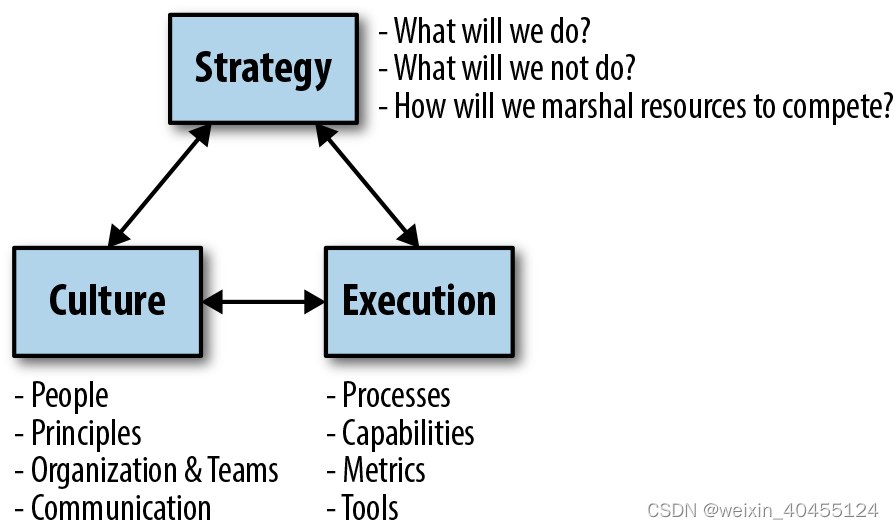Technology strategy Pattern 学习笔记1-Context: Architecture and Strategy-CSDN博客
| 阿里云国内75折 回扣 微信号:monov8 |
| 阿里云国际,腾讯云国际,低至75折。AWS 93折 免费开户实名账号 代冲值 优惠多多 微信号:monov8 飞机:@monov6 |
Context: Architecture and Strategy
1 Architect and Strategist
1.1 three primary concerns of the architect
1.1.1 Contain entropy(熵-混乱程度不确定性惊奇程度不可预测性信息量等等
- The architect who is containing entropy is stating a vision around
which to rally; showing a path in a roadmap; garnering support for
that vision through communication of guidelines and standards; and
creating clarity to ensure efficiency of execution and that you’re
doing the right things and doing things right - One cannot be successful as an architect without thinking of not only what to do, but how to get it done within an organization, which requires knowing why it should matter to someone who isn’t a technologist.
- a critical first step to being not only useful but powerful as an architect and strategist.
1.1.2 Specify the nonfunctional requirements.
1.1.3 Determine 权衡 trade-offs
The role of the architect is to see where those challenges may lurk隐伏, seek to make them explicit, and make value judgments about how to balance the solutions and the new problems they occasion, under the guidance of the broader business strategy
1.2 business strategy
1.2.1 business strategies will concern themselves with the following
- The goals of the organization
- The operating model: processes and how your company conducts its business
- Culture: the mores and value system, the modes of communication
- Talent strategy: how you source and retain talent, how you train them
- Facilities strategy: where you do business, relevant local laws,
and cost concerns
1.2.2 the strategist asks these questions - Are resources devoted to the right areas, to the most important
customers? - Are we creating products and services that can thrive in a market in different time horizons?
- Where should we spend money? Where should we cut costs?
- Where do skills need to be added or strengthened?
- Where can productivity be improved?
- What culture, attitude, and skills are required?
1.3 the strategist finds herself concerned with some or all of the following:
- Identifying business development opportunities
- Finding, proposing, and validating mergers and acquisition opportunities
- Building strategic capabilities within certain areas of the organization
- Performing research based on data to recommend long-term
directions for the company
战略-文化-及执行关系

A good first step for doing so is to create two versions of the strategy
1.5.1 可公开的版本及不可公开的事项版本:
- shorter version that communicates only the
changes you’re driving in a way that you can share publicly with teams.
1.5.2 给高管的版本:
- one that provides an honest and detailed examination of all three factors to share with the executive team
- In long-range planning there are financial, business transaction, and personnel matters that obviously can’t be disclosed.
Applying the Patterns
2.1 Establish context
- a. Analyze the trends happening in the world outside.
- b. Analyze the forces at work across your industry, your organization,and your department.
- c. Gain a view on your stakeholders.
2.2 Understand your competition, the market, and the technology landscape
2.3 Identify strategic options in your products, services, and technology roadmap.
2.4 Evaluate those options
2.5 Make a compelling recommendation with a coherent, cohesive, comprehensive strategy to gain approval and resources to execute your plans.
| 阿里云国内75折 回扣 微信号:monov8 |
| 阿里云国际,腾讯云国际,低至75折。AWS 93折 免费开户实名账号 代冲值 优惠多多 微信号:monov8 飞机:@monov6 |

